|
|
 |
|
|
 |
Five Albums for Jazz Novices
Or, Getting Started in Jazz Music (5/2/04)
This week, I have selected five albums that I believe provide a good introduction to jazz
music for somebody who has never listened to jazz before, but would like to start. I've seen a number of other lists
of this sort on the web, and I've noticed that many of them seem to recommend fairly difficult albums, or make an attempt
to "educate" the novice listener on the historical evolution of jazz music. However, I have taken a different approach.
While the recommendations below are from a variety of jazz styles and eras, and are all certainly classics, I chose
these albums especially because they are accessible and fun to listen to.
 Mahavishnu Orchestra
Birds of Fire
Released 1973
My guess is that lots of newcomers to jazz are already fans of rock music. If this describes
you, then the Mahavishnu Orchestra is an ideal way to acclimate yourself. In the late 1960s and early 1970s, jazz musicians
began incorporating the electrified instruments and aggressive sounds of rock into their playing, creating a new jazz style
known as fusion. John McLaughlin, a guitarist who had earlier played with Miles Davis, formed the Orchestra in 1970.
It quickly became the jazz world's premier fusion group.
The quintet drew not only on rock and jazz, but also on funk, country, and folk music.
The result sounds something like a really sophisticated Jimi Hendrix album--indeed, had he not died, this is easily
the direction Hendrix himself might have taken. McLaughlin's fiery solos are the highlight of Birds of Fire,
but violinist Jerry Goodman, keyboardist Jan Hammer, bassist Rick Laird, and drummer Billy Cobham are all excellent.
By the way, the Mahavishnu Orchestra's first album, The Inner Mounting Flame, is nearly as good, and is
highly recommended if you enjoy Birds of Fire.
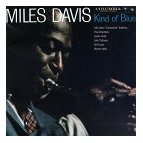 Miles Davis
Kind of Blue
Recorded March 2 and April 22, 1959
One thing that makes Kind of Blue great, as well as an ideal record for a new jazz
listener, is that it includes three of jazz's most famous musicians: Miles Davis, John Coltrane, and Cannonball
Adderley. Each of these three combined strong, distinctive personalities with an ability to distill those personalities into
their music. The first song, So What, demonstrates what I mean nicely, with Miles opening with
a cool, subdued, almost aloof solo; Coltrane following with his typical intense, searching bursts of notes; and finally Cannonball,
with a solo as gregarious, warm, and good-natured as the man. There is also great supporting work from pianist Bill
Evans, bassist Paul Chambers, and drummer Jimmy Cobb.
Many consider Kind of Blue the greatest jazz album ever. I wouldn't go that far
myself, but it does feature several top musicians at the height of their powers. It should be one of the first
stops for anybody embarking on a tour of jazz. (See a full review of this album in the Jazz Review Archive.)
 The Dave Brubeck Quartet
Time Out
Recorded June and August, 1959
Time Out is something of an experiment: most of the songs are in unusual time signatures,
rather than the typical 4/4 of most jazz. The liner notes do a good job of breaking each song down and discussing
their theoretical aspects, so I won't repeat that here. It is a real tribute to the musicians, though, that the playing
on Time Out is so polished, so smooth, that a superficial listener might never notice the album's experimental
nature.
The album is a fine example of cool jazz, a style that originated in the late 1940s and was
marked by restrained, laid-back playing. Pianist Dave Brubeck brings a sureness and sublety that reflect his classical
training, supported by the saxophone of Paul Desmond (who famously played like a "dry martini"), bassist Eugene Wright,
and drummer Joe Morello. It is one of the most listenable and rewarding albums in jazz. (For a full review of
Time Out, visit the Jazz Review Archive.)
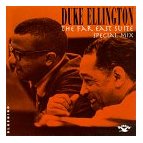
Duke Ellington and His Orchestra
The Far East Suite
Recorded December 19-21, 1966
Pianist and composer Duke Ellington's musical career spanned more than five decades, and in
that time he and his collaborator Billy Strayhorn wrote thousands of songs, dozens of which have become standards in the jazz
repertoire. The Far East Suite was one of his later works, and in my opinion is among the most satisfying--and fun--of
jazz albums.
Ellington and Strayhorn were inspired by a recent trip the Orchestra had made through the Middle
East and India, and the songs all have an Eastern feel to them. Ellington was famous for his intimate knowledge of his musicians'
abilities, providing them with the perfect material for superb soloing. This album is no exception. While there
are too many musicians to list here, I would like to single out alto saxophonist Johnny Hodges and drummer Rufus Jones for
their terrific contributions. I think big band jazz has a reputation of being moldy and out-dated, but whether that
reputation is justified or not in other cases, it certainly is not here. The Far East Suite is as fresh as
when it was first recorded.
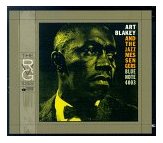
Art Blakey and the Jazz Messengers
Moanin'
Recorded October 30, 1958
Drummer Art Blakey was a leading figure in the hard bop movement of the late 1950s, which took
the sophisticated harmonies and virtuosic playing of 1940s bop and mixed in big helpings of blues and gospel. Moanin' is
built around The Drum Thunder Suite, on which Blakey plays his set using mallets, providing a, well, thunderous rhythmic
propulsion to the three-part song. The album also includes several other more straight-ahead, but still excellent, jazz
songs.
Like Miles Davis, Blakey acted as something of a talent scout for the jazz world,
discovering gifted young players and giving them a place to develop their skills. Moanin' features one of his
best line-ups, including saxophonist Benny Golson (who wrote most of the album's songs), pianist Bobby Timmons, bassist Jymie
Merritt, and most notably trumpeter Lee Morgan, whose solo on the title track is one of the most memorable jazz
solos of all time. Although I can recommend any Jazz Messengers album (in fact, I nearly went with 1962's Caravan),
I feel that Moanin' rises just a bit higher than some of their other great albums.
Five
More Albums for Jazz Novices
Or, What to Get Next (5/9/04)
Last week, I selected five albums that would provide a good introduction to jazz music
for somebody who has never listened to jazz before, but would like to start. This week, I've picked five more albums
that are good choices for a newer listener, but who is not a complete novice. For varying reasons, I believe that
all the albums below would be more fully enjoyed and appreciated by somebody with some familiarity with the sounds of jazz
music. With that caveat, let me also say that all the albums below are true classics (or in the case of St.
Louis Shoes, a soon-to-be classic) and each is immensely enjoyable in its own way.
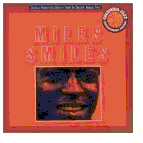 Miles Davis
Miles Smiles
October 24 and 25, 1966
Last week, I mentioned Miles Davis's role as a sort of jazz talent scout, finding overlooked
but talented young players and nurturing them during their early careers. After the classic groups of the 1950s, Miles
went out in the early 1960s and assembled an entirely new group of young, hungry musicians, and just like their predecessors,
they all went on to become giants of the jazz world in their own right. (And Miles would do it again just
a few years later!) The line-up for Miles Smiles includes pianist Herbie Hancock, saxophonist Wayne Shorter,
bassist Ron Carter, and drummer Tony Williams, all of whom are in top form.
Miles Smiles is a masterpiece of mood and subtlety. Worth special mention is
the ballad Circle, on which Herbie Hancock plays one of the most sublime piano solos ever recorded. But
that's not to diminish any of the other great songs on this fine record, one of the very high points in Miles's long and illustrious
career.
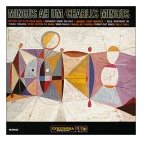 Charles Mingus
Mingus Ah Um
Recorded May 5 and 12, 1959
Bassist and composer Charles Mingus was known for his big appetites, in every sense of that
word. Later in his life, his physical appetites would lead to ill health and his early demise, but his artistic
appetites led him to make big, ambitious, and sometimes messy albums. Mingus was not one to take a small bite of anything.
Mingus Ah Um is one of the key hard bop albums, and a number of songs from it have
become jazz standards. The sad, exquisite ballad Goodbye Pork Pie Hat (in memory of saxophonist Lester Young,
who died two months before the recording of Ah Um) is probably the most famous song, having been covered by
dozens or hundreds, including rock guitarist Jeff Beck. Other songs include the gospel-jazz Better Git It in Your
Soul; the loping Fables of Faubus, evoking the buffoonish but menacing racist governor of Arkansas in the
1950s; and a trio of songs dedicated to jazz heroes of a previous era: Jelly Roll (Jelly Roll Morton), Open
Letter to Duke (Duke Ellington) and Bird Calls (Charlie Parker). Mingus serves up a big plate of steaming
hot jazz, and listeners will relish digging in.
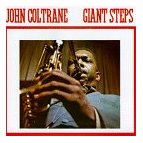 John Coltrane
Giant Steps
Recorded May 4 and December 2, 1959
Giant Steps is aptly named, for it came at a point in John Coltrane's career when he
was beginning to free himself from the song structures and harmonic limitations of jazz of that time. His saxophone
had always had a probing, searching quality, and a freer style of playing allowed him here to explore jazz with a new
urgency. In the history of jazz, it can be considered a stepping stone between hard bop and free jazz.
If not quite as intensely spiritual as some of his later albums, neither does Giant
Steps suffer from their self-indulgences. There is not a weak song, or even a weak moment, on it, and Coltrane's
muscular solos are supported by expert playing by his sidemen throughout. I highly recommend it for novice listeners
who already have a few jazz albums under their belts and are willing to try something a little more challenging. (For
a full review of Giant Steps, visit the Jazz Review Archive.)
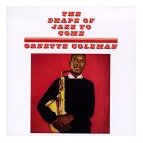 Ornette Coleman
The Shape of Jazz to Come
Recorded May 22, 1959
The Shape of Jazz to Come must have seemed an arrogant title at the time, but considering
that with the album Ornette Coleman launched free jazz, a jazz movement that continues to this day, it now seems rather prescient.
Saxophonist Coleman, cornetist Don Cherry, bassist Charlie Haden, and drummer Billy Higgins did away with the old rules governing
what notes could be played and when, which is not at all to say that the songs they played lacked structure. However,
their songs did lack conventional melodies and harmonies, though they made up for them with an immediacy and rawness
not previously available to jazz musicians.
This album is definitely for jazz fans with some confidence in their listening ability.
The playing on the album ranges from joyous to sad to neurotic and even to romantic, but because the musicians play so chromatically,
some parts can sound abrasive at first. I imagine some listeners will get it right away, and others might have
to listen a few times before understanding. But those who approach The Shape of Jazz to Come with an open mind
will be rewarded with music that places few boundaries between the pure interior state of the musicians and their performance.
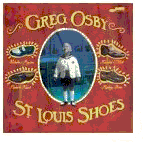
Greg Osby
St. Louis Shoes
Recorded January 22 and 23, 2003
Jazz musicians today can draw on more than 80 years of songs, styles, and techniques for making
jazz music. I think many musicians find this wealth of material overwhelming, and retreat to one preferred style to
follow for their entire careers, never venturing out to try anything new. Others go in the opposite direction, trying
always to create completely original, never-before-heard sounds, usually to the detriment of coherence and listenability.
A talented few, however, are able to take all that has come before and add their own voices to it, breathing new
life and freshness into jazz. Saxophonist Greg Osby is just such a musician. St. Louis Shoes is his most
recent album, and it is especially appropriate for a jazz listener with a little more listening experience, for its nine songs
are all standards from jazz's various eras, from 1927 to the 1990s, and previous encounters with those songs will make
hearing them here more enjoyable.
It is a real delight to listen to Osby and his band provide new and unexpected arrangements
for old songs, playing in ways that would never have occured to their original composers. Yet, although they alter nearly
every aspect of some songs, they still manage to maintain the music's essence and integrity, so that it is recognizable
both as a product of its era and as modern. I don't think it is going too far to say that with St. Louis Shoes,
Greg Osby provides a link between jazz's past and its future.
|
 |
|
|
 |
|
|
 |
|
|
|
|
|
|
 |

